|
-
13th August 25, 04:28 PM
#5
Perhaps the best alternative to wool is true P/V. Now, to get things straight, there are a lot of kilts out there sold as P/V that are not actually a blend of Polyester and Viscose (Rayon in N. America)
To my knowledge there is only one mill weaving true P/V and that is Marton Mills in Otley, England. The fabric they sell is a blend of 60% Polyester and 40% Rayon. If a kilt maker is advertising that their product is made from P/V ask which mill wove the fabric. If they do not say Marton Mills, pass them by.
There are very few makers using Marton Mills P/V. USA Kilts is perhaps the best known and most respected. I would give their Casual model, their Semi-Trad model, their 5 yard model, or their Box Pleated model a good look.
The highlights of what to look for when choosing a kilt that can be worn for dressy occasions are -
The Tartan pattern is aligned perfectly everywhere. This includes not only in the back where the pleats are sewn but at the upper band in the front.
This is unprofessional.

The pleats should hang vertically in the back. The kilt should not look like an "A" line skirt.
This looks bad.

The Tartan pattern in the Pleats should be consistent and even all the way down the pleat. You should not see the Tartan pattern wavy, crooked, or closer to one edge as you look down the pleat.
Avoid this.
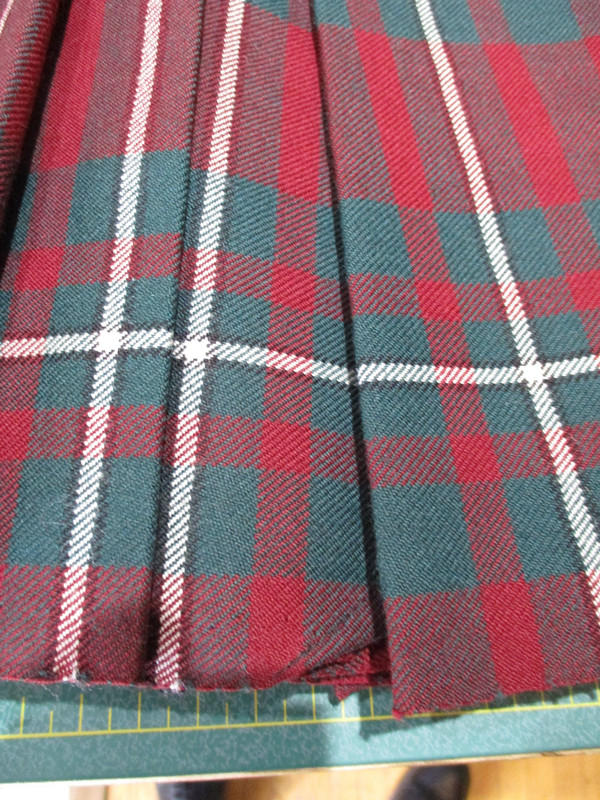
The pleats should hang in the back without any waves, or wrinkles. From just a few feet away it should not look like there are any pleats at all.
Run Away, Run Away!

If there are loops on the back of the kilt, they are not belt loops. They are to hold the sporran strap, not hold the kilt up.
Only if you do not care that your kilt will be distorted out of shape very quickly.
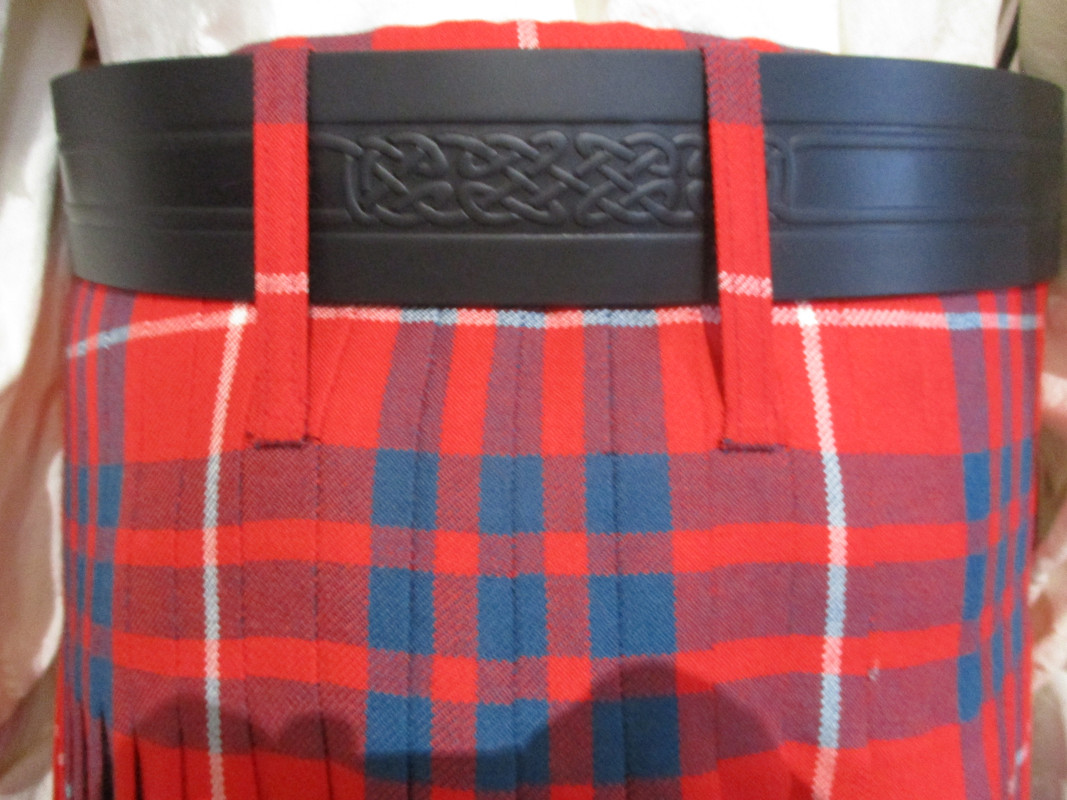
Remember that a kilt is not worn like a pair of trousers. The top of the kilt is worn high. And the bottom should show some knee.
If you wear a vest there should be no shirt showing.

More than any other thing that tells a good kilt from a kilt that is not so good is -
If you grab the buckles in the back and pull, you should not see any stretching, which puts stress on the pleat stitching. The stitching will fail.
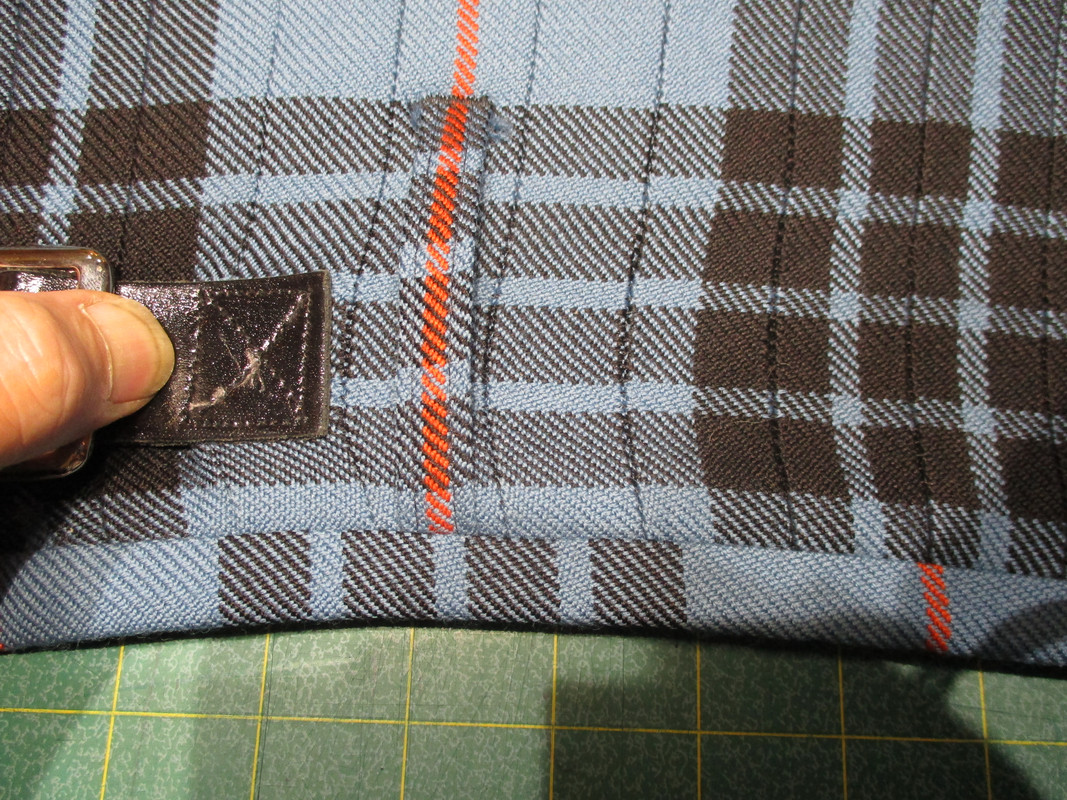
This is due to the internal construction. The liner inside the kilt is not to keep the kilt clean. If that were true the liner would be removable and washable. The liner is there only to hide the internal strengthening elements built inside.
If you can lift the liner and see nothing underneath, the kilt will fall apart after just a few wearings.
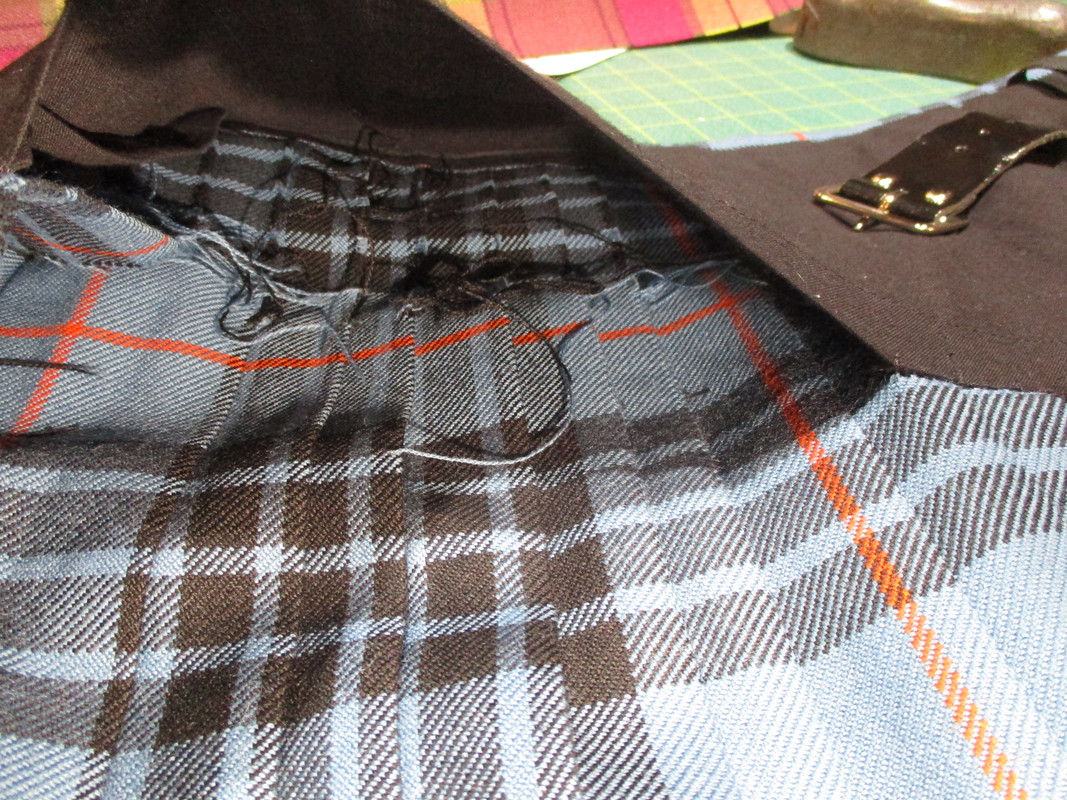
While it is true that nothing looks, hangs, or swishes, like a full Hand-stitched wool kilt made by a custom kiltmaker, it is how the kilt is made, far more than the fabric it is made from, that makes the difference in the lok, and your enjoyment of, your kilt. Here is an example of a 16oz wool kilt flanked by two true P/V kilts.
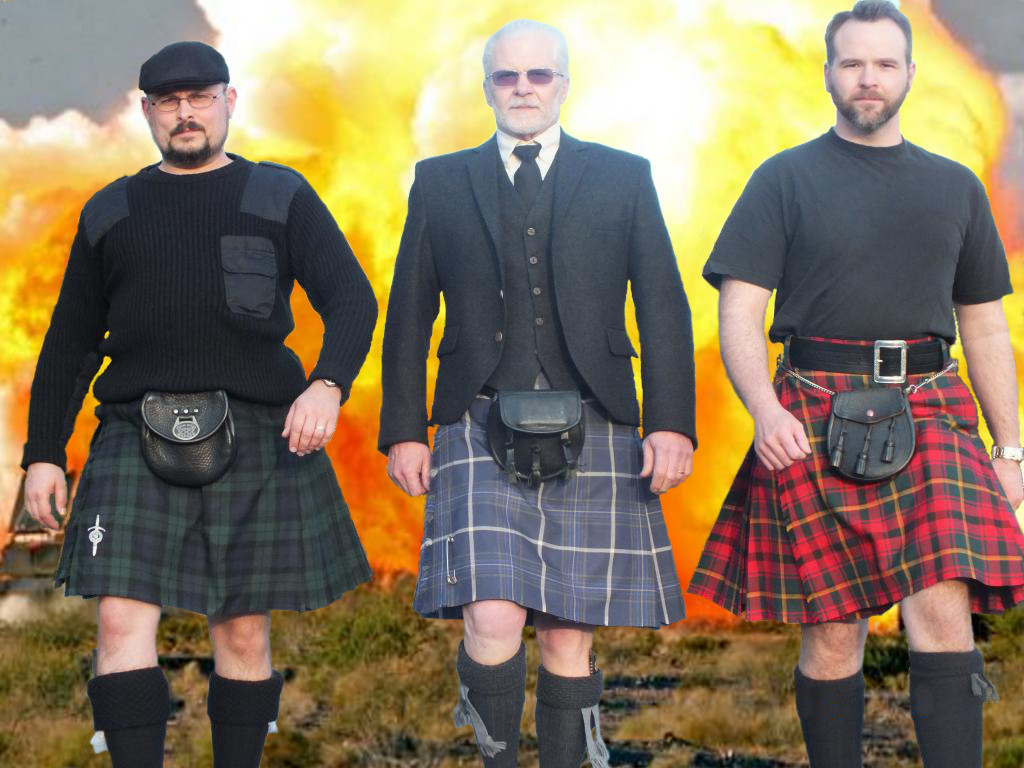
Oh -- and an edit on fabric weights.
When a seller says an 8 yard kilt, they are talking about the length of the fabric not the width.
Fabric is sold by the length also, but the width is different.
Fabric is sold by the yard at 60 inches in width. This means that one fabric yard is 36 inches X 60 inches.
An 8 yard kilt 24 inches long uses only 40% of 8 fabric yards.
An 8 yard kilt of 16oz fabric will weigh around 50-52 ounces. Or about 3.25 pounds.
True Marton Mills P/V fabric weighs just under 12oz per fabric yard. This means that an 8 yard P/V kilt should weigh about 25.5 oz or between 1.6 and 1.75 pounds.
Most of the Acrylic kilts I have run across weigh about 4-5 oz per fabric yard. So an Acrylic kilt will come in at about 3/4 of a pound.
A good question to ask a kilt seller, is how much does their 8 yard kilt weigh.
Last edited by Steve Ashton; 13th August 25 at 09:24 PM.
-
The Following 7 Users say 'Aye' to Steve Ashton For This Useful Post:
Tags for this Thread
 Posting Permissions
Posting Permissions
- You may not post new threads
- You may not post replies
- You may not post attachments
- You may not edit your posts
-
Forum Rules
|
|
















 Reply With Quote
Reply With Quote






Bookmarks